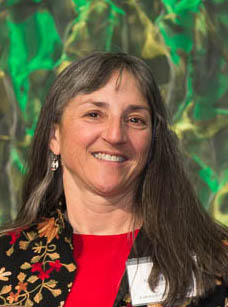
14 Jun Town Talk: Suspended Animation, Exploring Secrets of Cryopreservation
The Telluride Science Research Center hosts Professor Nancy Levinger of Colorado State University. Her talk, titled “Suspended Animation: Exploring Secrets to Cryopreservation,” is the second in a 7-week series of Town Talks presented by TSRC. The event takes place at the Telluride Conference Center in Mountain Village on Tuesday, June 19, 2018, 6:30 p.m. Admission is free; cash bar opens at 6:00 p.m.

Professor Nancy Levinger, CSU.
Currently, it is not possible to wake up the “cryopreserved” Walt Disney, but a professor at Colorado State University is researching the fundamentals that will enable the freezing of cells and potentially larger biological materials.
On Tuesday, June 19, CSU Chemistry Professor Nancy Levinger gives a TSRC Town Talk, titled “Suspended Animation: Exploring Secrets to Cryopreservation,” revealing how cells, tissues and potentially more can be preserved at extremely low temperatures.
Cryopreservation is the technique of storing biological materials, like cells, at low temperatures in order to one day be able to warm up and then revive them. Sperm banks use this preservation technique in order to keep sperm for years until they are needed for their intended use.
Bottom line: whether it’s storing human sperm and eggs in order for eager couples to have children when the time is right or storing plant cells to prevent the extinction of vital species, cryopreservation allows for the pausing of life for small biological materials so they can be saved to live on in the future.
This process includes placing various biological materials in different solution concoctions that act as an antifreeze and preserves some of the cells at low temperatures. Levinger said that a main component of successfully cryopreserving a cell includes making sure the cell membrane does not break due to ice crystal formation or by being oversaturated with water by osmosis.
“As soon as you start to freeze on the outside, the concentration of everything that’s left in the liquid part of the water goes up,” Levinger added. “The amount of water inside the cell wants to go up, so the cell would inflate. So (instead), they use artificial cryopreservation agents in order to help prevent ice formation on the inside, but they also take up some space.”
In order to prevent the ice crystal formation and over-saturation, an antifreeze-like chemical solution is added to the cells. An issue with adding these chemicals into a biological material is that these chemicals are normally toxic, so they need to be added in small enough doses to ensure the material is alive when it thaws, but in large enough doses that the cell is alive after thawing.
“When they thaw it back out, they can’t get rid of the stuff that they used to be able to freeze it, so it’s dangerous,” Levinger said on the issues of cryopreservation. “It’s like introducing toxic chemicals to a (sick) patient.”
In order to learn why certain cryopreservation techniques work and what parts of the cryopreservation techniques actually contribute to keeping the cells alive, Levinger’s group looks to nature for inspiration, like pine bark beetles, which can hibernate to around – 30 °C .
“One of the things we do with cryopreservation is we take a page from nature’s book,” Levinger said. “We look at what nature does in order to keep things from freezing, and we use similar types of molecules.”
Levinger’s talk is an introduction to cryopreservation, oriented towards anyone interested in learning more about this remarkable topic, regardless of scientific background. Although Walt Disney may not come back to life, cryopreservation can change how biological materials are stored in the medical field and more.
“I find it totally amazing,” Levinger said. “I take you, I dip you in liquid nitrogen and you die. How is it that I can take cells that are alive and I can leave them in liquid nitrogen for a long time, and I pull them back out and warm them up and they’re alive? That seems totally fascinating to me.”


Sorry, the comment form is closed at this time.